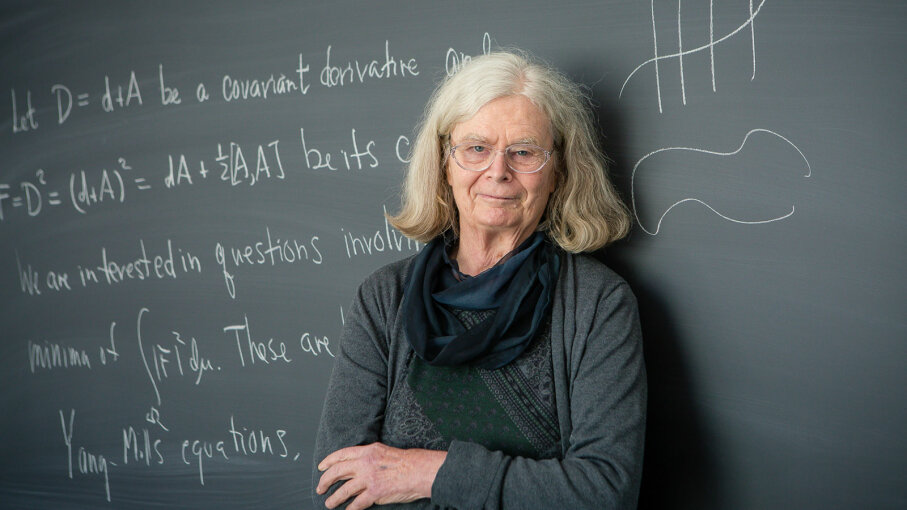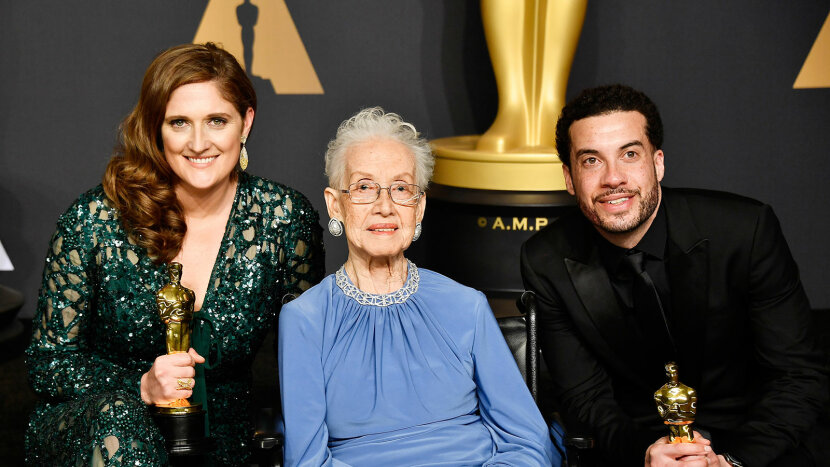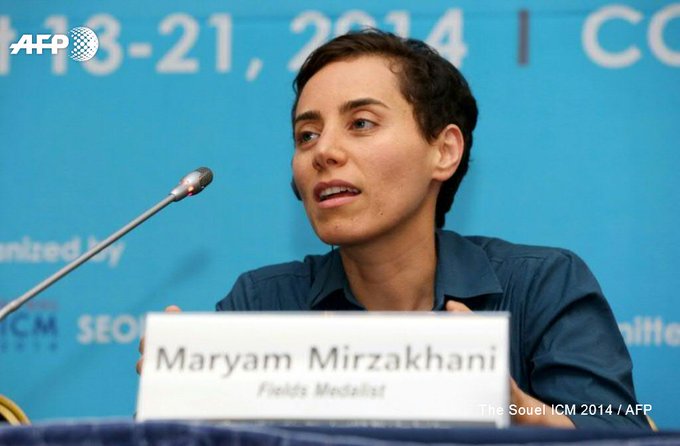Cathleen Morawetz, Mathematician With Real-World Impact, Dies at 94 nyti.ms/2vqeCj3

In 2019, Karen Uhlenbeck became the first female recipient of the Abel Prize, the highest prize in mathematics (there is no Nobel category for math). The award was in recognition of Uhlenbeck's pioneering work in geometric partial differential equations and gauge theory, known as the mathematical language of theoretical physics.
Uhlenbeck's groundbreaking insights have applications in particle physics, string theory and general relativity. But she's not the only famous female mathematician out there. Let's meet some others, in order of chronology.
1. Emmy Noether (1882-1935): Her Theorem Changed the Scientific World
Mathematician and cosmologist Ruth Gregory once said, "It is hard to overstate the importance of Noether's work in modern physics." Indeed, while it's tough for us laypeople to wrap our heads around it, "Noether's theorem" is one of the great scientific insights of the past century and laid the groundwork for abstract algebra and theoretical physics.
Born in Germany in the late 19th century to a mathematician father, Emmy Noether wasn't allowed to officially enroll in university, which was male-only. So she audited classes, passed all her exams and earned her undergraduate degree. She later earned a Ph.D. at another university that finally accepted women but wasn't allowed to hold a teaching position.
In 1915, a year after Albert Einstein published his general theory of relativity, the young Noether, then an unpaid lecturer at the University of Göttingen was summoned by a group of the world's leading mathematicians to help solve a problem with Einstein's revolutionary take on gravity. Unfazed, she proved why general relativity doesn't go against the established law of conservation of energy.
Three years later, she published her own groundbreaking theorem establishing the mathematical relationship between laws of conservation and something called symmetry. Noether's theorem — which isn't a theory, but a mathematical proof — proved that every law of conservation (energy, momentum, angular momentum, etc.) was bound to an associated symmetry in nature. Before this, scientists had not realized these were related.
With Noether's mathematical tool, physicists developed the Standard Model, which describes the interactions of weak, strong and electromagnetic forces. And Noether's theorem is now helping to explain the behavior of black holes and the existence of dark matter.
2. Katherine Johnson (1918- ): NASA's 'Human Computer'
Immortalized by actress Taraji P. Henson in the 2016 movie "Hidden Figures," Katherine Johnson was a trailblazer in more ways than one. As a black woman growing up in segregated West Virginia, she broke through entrenched racial barriers in both education and employment to become a key figure in the success of America's early space program, including John Glenn's 1962 orbital mission.
Recognized for her mathematical brilliance at an early age, Johnson sped through school and graduated early at the historically black West Virginia State College. After teaching at black public schools for a few years, she was asked to be one of three students to integrate the graduate programs at West Virginia University in 1939. She accepted the challenge, but ended up leaving the program when she and her husband decided to start a family.
Johnson stayed home, like most women of her generation, to raise her three young daughters for the next decade, eventually returning to teaching in local schools. But her life changed forever when a relative told her about an all-black computing department at what was known in 1952 as the National Advisory Committee for Aeronautics (NACA). Johnson and her family moved to Virginia to be close to the Langley research facility, where she quickly impressed her bosses with her fast and accurate calculations.

Johnson, known as one of NASA's "human computers," ran key computations for calculating trajectory analysis and the orbital paths of near-earth satellites. Her shining moment came during last-minute preparations for Glenn's Friendship 7 mission, the first to send an American astronaut into orbit. Anxious about leaving his fate in the hands of primitive computers, Glenn ordered his flight engineers to "get the girl" to run the calculations by hand. "If she says they're good," Johnson remembers Glenn saying, "then I'm ready to go."
In 2015, Barack Obama awarded 97-year-old Johnson the Presidential Medal of Freedom and NASA celebrated her 100th birthday in 2018.
3. Cathleen Morawetz (1923-2017): Ingenious Problem-Solver
Some brilliant mathematicians prefer to dive deep into abstract ideas and theoretical principles, but not Cathleen Morawetz, a Canadian mathematician who applied her skills to solving some of the most complex real-world problems in physics.
Like Noether, Morawetz's father was an accomplished mathematician and physicist. And in a striking parallel, Morawetz was mentored as a doctoral student at New York University (NYU) by Richard Courant, one of Noether's mentors back in Göttingen. After earning her Ph.D., Morawetz spent the rest of her research and teaching career at NYU, where she eventually became the first female director of the Courant Institute of Mathematical Sciences.
Morawetz is best-known for her mathematical techniques related to wave propagation known as the "Morawetz inequality" and the "Morawetz estimate." In 1956, she was the first to prove that no aircraft airfoil design could completely eliminate shock waves at supersonic speed. This allowed engineers to design wings that would minimize the shocks rather than attempting to eliminate them. She would go on to conduct mathematical research in nonlinear wave scattering by obstacles. Her work is central to the fields of hyberbolic and mixed-type partial differential equations, advanced math used by engineers to model real-world interactions with different types of waveforms.
Morawetz was not only a certified genius, but also a dedicated mentor for female mathematicians at NYU. Among her many awards and recognitions was the National Medal of Science in 1998, the first female mathematician to receive it.
4. Karen Uhlenbeck (1942- ): First Woman to Win the 'Nobel' of Math
As a child, Karen Uhlenbeck loved reading, which led her to become interested in science. She studied at NYU's Courant Institute and got her Ph.D. from Brandeis in 1968. When she went job-hunting, she remembers, "The places interested in my husband — MIT, Stanford, and Princeton — were not interested in hiring me." Though the universities phrased it as due to "nepotism rules," she believed it was because she was a woman.
She eventually received a MacArthur Prize Fellowship in 1983 and was appointed a professor at the University of Texas at Austin in 1987, where she remained for three decades. Her research focused on geometric partial differential equations and gauge theory and helped to advance string theory and particle physics. Her work at the intersection of math and physics caused her to receive the Abel Prize for mathematics in 2019, the first time it had gone to a woman.
In addition to being lauded as one of the most important mathematicians of the 20th century, Uhlenbeck is a passionate advocate for increasing the number of women in mathematics, launching several programs to encourage women, as well as children, to become more involved in math.
5. Maryam Mirzakhani (1977-2017): Math Star Extinguished Too Soon
In 2014, at 37 years old, Maryam Mirzakhani became the first woman and the first Iranian to win the Fields Medal, a top mathematics prize awarded every four years to outstanding scholars under 40. Tragically, Mirzakhani passed away in 2017 after a long battle with breast cancer.














